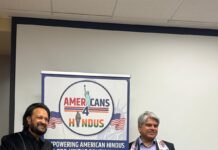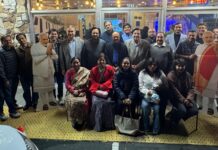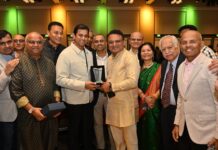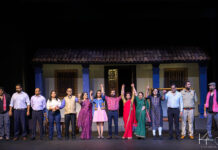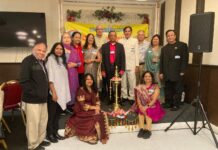We will not wait any longer! Give us the vote! That’s right -no more! We’re not asking – we’re demanding! Give us the vote! – From the Movie Selma.
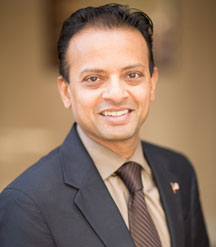
Movements happen in baby steps, and with a phenomenal leader at the helm. The fact that you and I have the right to vote, the moment we embraced American citizenship, is partly because of what happened in Selma in 1965.
Historical movies are a hit or a miss, but Selma touched a chord with many, and critics loved it. I definitely enjoyed watching it and feeling the angst of the characters. It’s a poignant rendition of one of the most searing moments of the civil rights movement – peaceful protesters violently stopped by police as they marched to demand voting rights. It’s an incident that would ultimately lead to the passing of the Voting Rights Act of 1965,
Selma is a defining moment in American history and we have to thank Dr Martin Luther King, Jr. for it. With Ferguson so fresh in our minds, this movie will touch a chord, if you haven’t seen it yet. Selma evokes similar feelings as watching Gandhi. The ‘hatke’ non-violent freedom movement launched by Gandhi stirred our heart, and in Selma, the ‘fight’ for the right to vote, equally so.
Dr King’s bold and sometimes dangerous campaign, viewed at very close range, demonstrates how Dr King worked through a deck of cards stacked against the movement, but winning against all odds, with finally President Johnson signing the Voting Rights Act of 1965. This was a very significant victory for the civil rights movement, ensuring that race does not deny the right to vote, ultimately making America the country it is today. Jeff Greenfield, referencing those times, says: “Men and women in my lifetime have died fighting for the right to vote: people like James Chaney, Andrew Goodman and Michael Schwerner, who were murdered while registering black voters in Mississippi in 1964, and Viola Liuzzo, who was murdered by the Ku Klux Klan in 1965 during the Selma march for voting rights.”
Taking voting for granted
Back in India, the Constitution of India 1950 defined the “Right to Vote”. The right to vote is a given for many Indians. The cost of freedom and independence is understood by most of us, but do we take voting for granted? In India it seems to be a passion. Last year, we saw a 66.4% voter turnout in India with an average of 60% between 1952 and 2014.
Voting in India is still a process of standing in long lines to cast your vote; vote by mail-in-ballot is still not an option. Strangely, despite this being a holiday for public as well as private offices, no plans are being made for picnics and shopping trips, but the vote is exercised diligently. Are we Indian Americans taking voting seriously as our counterparts in India?
Indian Americans make up about 2.8Million people – approximately 1% of the population of United States. The Indian-American community is likely the highest wealth and educational status among U.S. ethnic groups, and is the country’s third largest Asian group after Chinese Americans and Filipino Americans, according to American Community Survey of 2010 data.
Indians are now the largest Asian subgroup in 25 states in America, mainly in the South and Midwest, responsible for population growth of Asian Americans, according to the US 2010 Census. California is the state with the largest population of Indian Americans at 528,176 with San Jose leading with 43,827 Indians or 4%, followed by Fremont at 38,711 or 18% and Los Angeles at 32,996. Indian Americans now constitute 22.6% of the population in Cupertino, 18.08% in Fremont, 15.52% in Sunnyvale.
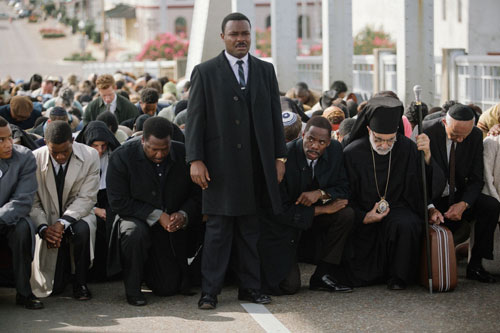
Fremont has seen an Indian American elected to city council in Anu Natarajan, and so has San Jose with Ash Kalra. How about Los Angeles and Sunnyvale? None so far. The path was not been easy for those who are elected and others who are trying to get the community better representation in the country’s decision-making bodies. The key challenge – several Indian-Americans do not take their voting rights seriously.
Case in point Fremont
Let us take Fremont with a population today upwards of 40,000 Indian Americans out of 225,000. With only 11,000 Indian Americans registered to vote, that is a pretty depressing statistics. About 1500 have never voted ever. About 8,500 have voted occasionally, with about 3,700 high propensity voters (voters who have voted 3 times in the last 5 elections) – less than 10% of the population and about 30% of the registered voters.
Raj Salwan who was appointed to Fremont City Council, and was running for election for the first time as an incumbent councilman, lost by 800 votes in the elections last November. This was a shock for many political pundits in the bay area, as his victory was considered a given being the incumbent.
Raj explains his loss, “Only 3,700 out of the 11,000 Indian Americans voted. If we had only a 1000 more registered to vote, or actually vote, it would have made a huge difference for my win. What could we have done differently? There should be a way to get more Indian Americans mobilized, to register to vote. Also, as a community we need to build an infrastructure to make it easier for our Indian American candidates to win by getting our population engaged.”
Here is another key Fremont statistic. About 5700 out of the 11,000 vote in a Presidential election and only 3700 in a non-Presidential. Seemingly the importance of their vote is an alien concept for the Indian American community?
There is apathy! The result is now the Fremont council does not have an Indian American representation with Anu Natarajan recently termed out. A population of 40,000 Indian Americans of Fremont do not have a voice in the city, to keep them in the loop and safeguard their interest. That is surprising in a city where 1 in 5 residents are Indian-American. Can we do better?
Those who have gone before us say “no more”! No more! NO MORE! …That means protest! That means march! That means disturb the peace! That means jail! That means risk! That is hard! -SELMA.
Voter apathy
Many a times we hear Indian Americans running for office say, “Indians don’t vote and I cannot rely upon their vote to win.” Anu Natarajan a two time councilmember from Fremont, and who unsuccessfully ran for Mayor in 2012 has this to offer. “If you look at the numbers, there is an increase in the percentage of voters among the Indian American community. This community shares similar voter apathy and disconnect as every other California community. I think civic engagement is something we start with high school kids. In my mayoral run in Fremont in 2012 – the voter turnout generally was fairly low and the turnout among the Indian voters was significantly low as well.
“I believe we are not at a point where we have both a significant number of registered voters and a robust turnout where can bank on the Indian voter base to make a significant difference in local races. In as much as we need to focus on voter participation and civic responsibilities for all, we have a lot of work to do with the Indian-American community”
Yes! There are role models
Maryland in contrast to California has only 79,000 Indians but has a track record of getting Indian Americans elected to office, unlike any other state perhaps triggered by Kumar Barve’s win in 1990 to the House of Delegates. Having a role model is key to mobilizing our election infrastructure, and getting them energized. Kumar Barve who is currently the Majority House Leader has this to offer, “I first ran 24 years ago and won. Back then, Indian Americans only voted for Presidential election, but we see a steady improvement now. There is a strong urge within our population to support the public schools, and issues that impact them get their attention and the vote.”
Education is the one issue that seemingly resonates with our population and gets them out to vote in hordes. What can we do better? “The adoption of Indian Americans to citizenship can be better in comparison to some of our Asian brethren”
Adopting American citizenship
What prevents Indians from taking up American citizenship? We hear of the urge to hold onto the Indian citizenship. Sometimes it is the process/cost involved in going through the naturalization process. Another reason we hear often is the fear and commitment of jury duty.
Not taking up citizenship gets you a “get out of jail free” card whenever you get a jury summons. But interestingly, it is perceived offensive by many Americans that someone would live in “my country”, derive the benefits but not be interested in taking up citizenship.
Then there is the taxation issue – once an American citizen, you have to pay your taxes, no matter where you are. Making a commitment one way or the other simplifies life to some extent, and the merits of becoming an American citizen are many, which start crystallizing the longer folks stay in this country. Sitting on the fence is just confusing to life!
We also hear plenty of reasons to NOT vote? Voting is found to be a cumbersome task by many of our busy, successful and family driven community. Seemingly, it doesn’t surf up as a priority. Often, we cite the busy schedule as a hindrance to vote, not being willing to stand in lines. But with the absentee voting that is established voting practice in 50 states, that should not be an issue at all. It takes 5 minutes to register for absentee voting online – so that excuse does not hold up.
Collectively we have a Voice
Elections have consequences, whether we want it or not. If you consider how campaigns are conducted, they target high propensity voters, and if as a community we don’t vote, we are not only NOT targeted as a segment to approach, but we are also ignored as a community when it comes to issues that impact us. There isn’t a strong urge to address our aspirations and needs, as we will have become a voting bloc that need NOT be pandered to.
When we hear of Sureshbhai Patel, an Indian grandfather visiting Huntsville, Alabama to help out his family, being manhandled by a police officer, for no fault of his other a communication handicap due to an inability to speak English, there is a sense of outrage. “What can we do to prevent this happening again?
How can we stop it?”
We hear frustration on decisions being made at the school board or by the city council – that does not align with our core beliefs or even our intelligence.
Our vote is the Satyagraha weapon for every Indian American. Simple, but it is very much true. We just have to break the stigma of a community that does not exercise their vote – as this could quickly snowball into a situation where Indian Americans running for office ignore their own Indian community during the campaign – which will further aggravate the problem.
When Selma ends, theatres have found the audience sitting in their seats, wiping a tear or two and applauding. We leave the theatre on a high note – yes everything is hunky dory. But voting rights have recently been eroded by our highest court and then by states across the country. So let us not take our right to vote to be taken for granted.
Today, Section 5 of Voting Rights Act is set to expire in 2013, but it is to be noted that since 2010, the Department of Justice has filed 18 Section 5 objections to voting laws in various states. Yes, we all need to be vigilant, and not take the right to vote as granted, but take it as a sacred fulfillment of our obligations in this world to make the world a better place.
“Our lives are not fully lived if we’re not willing to die for those we love, for what we believe”- SELMA
Rishi is Silicon Valley’s energizer bunny deeply engaged in local causes in making his community better. He is an elected city councilmember in Saratoga, CA and a Silicon Valley hi-tech executive who continues to follow his passion for community service and community building. Rishi Kumar is also the founder of the Bay Area Indian American Democratic Club whose charter is to further the interests and values of Indian Americans, work towards political empowerment and advance ethical standards in the political system. You can reach him via his website www.RishiKumar.com
Rishi Kumar

